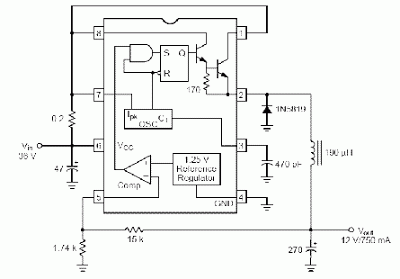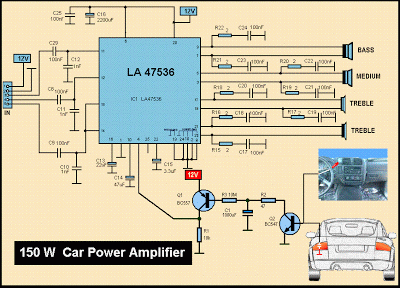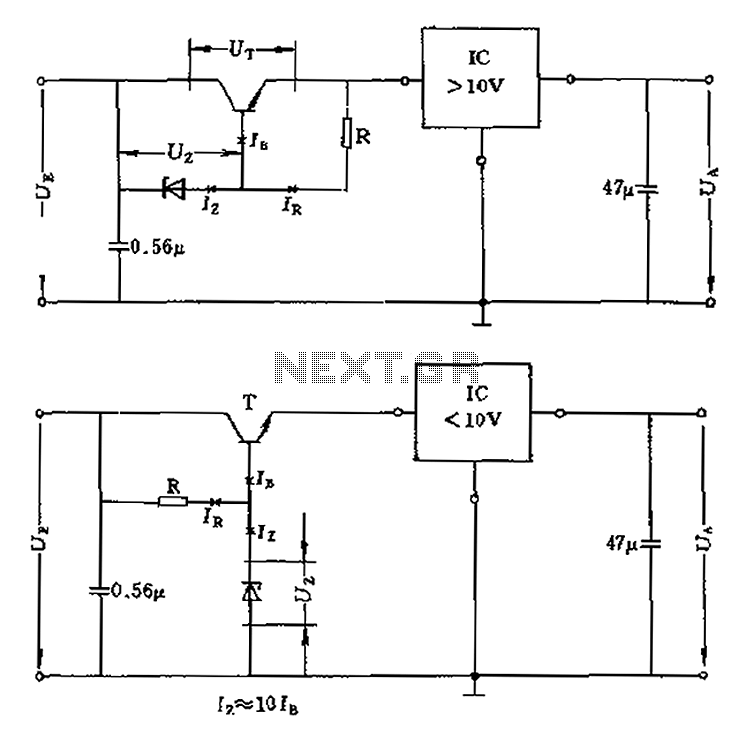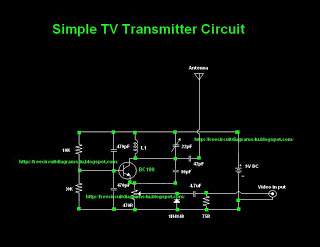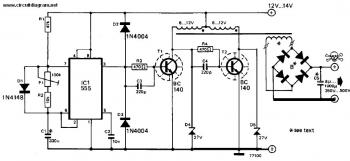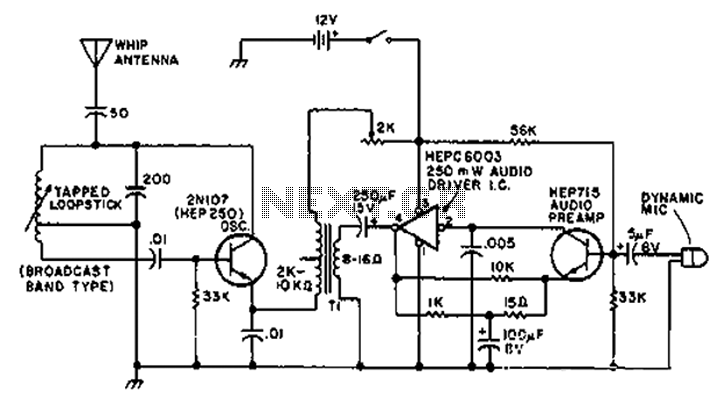
One Transistor FM Receiver circuit diagram
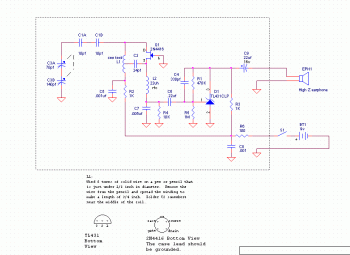
This is a very simple FM receiver built using only one transistor. It does not utilize any chips or other active components. The output is connected to earphones; an amplifier circuit is required if the radio is to be heard through a loudspeaker.
The FM receiver circuit primarily consists of a single transistor functioning as the active amplification element. The simplicity of this design allows for easy construction and understanding of fundamental FM reception principles. The circuit typically includes a few passive components such as resistors, capacitors, and an inductor, which together form the necessary tuned circuit for signal reception.
In operation, the circuit receives FM signals through an antenna, which can be a simple wire. The antenna picks up radio frequency signals, which are then filtered and amplified by the transistor. The transistor is configured in a common-emitter or common-collector arrangement, depending on the desired output characteristics.
The output from the transistor is typically at a low level, suitable for direct connection to earphones. For applications requiring a louder output, such as driving a loudspeaker, an additional amplifier stage is necessary. This amplifier can be constructed using another transistor or an integrated circuit designed for audio amplification.
To enhance performance, the circuit may include additional components such as a variable capacitor for fine-tuning the frequency response, allowing the user to select different FM stations. Furthermore, bypass capacitors may be employed to stabilize the power supply and improve audio quality by reducing noise.
Overall, this simple FM receiver circuit serves as an excellent introduction to radio frequency electronics, demonstrating essential concepts such as signal amplification, tuning, and audio output interfacing.This is a very simple FM receiver which build based on one transistor only. No chip or another active component. The output is connected to earphones, you need an amplifier circuit if you want to listen the radio with a loudspeaker. 🔗 External reference
The FM receiver circuit primarily consists of a single transistor functioning as the active amplification element. The simplicity of this design allows for easy construction and understanding of fundamental FM reception principles. The circuit typically includes a few passive components such as resistors, capacitors, and an inductor, which together form the necessary tuned circuit for signal reception.
In operation, the circuit receives FM signals through an antenna, which can be a simple wire. The antenna picks up radio frequency signals, which are then filtered and amplified by the transistor. The transistor is configured in a common-emitter or common-collector arrangement, depending on the desired output characteristics.
The output from the transistor is typically at a low level, suitable for direct connection to earphones. For applications requiring a louder output, such as driving a loudspeaker, an additional amplifier stage is necessary. This amplifier can be constructed using another transistor or an integrated circuit designed for audio amplification.
To enhance performance, the circuit may include additional components such as a variable capacitor for fine-tuning the frequency response, allowing the user to select different FM stations. Furthermore, bypass capacitors may be employed to stabilize the power supply and improve audio quality by reducing noise.
Overall, this simple FM receiver circuit serves as an excellent introduction to radio frequency electronics, demonstrating essential concepts such as signal amplification, tuning, and audio output interfacing.This is a very simple FM receiver which build based on one transistor only. No chip or another active component. The output is connected to earphones, you need an amplifier circuit if you want to listen the radio with a loudspeaker. 🔗 External reference
